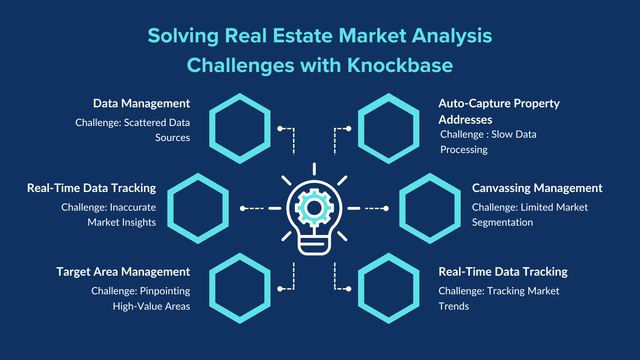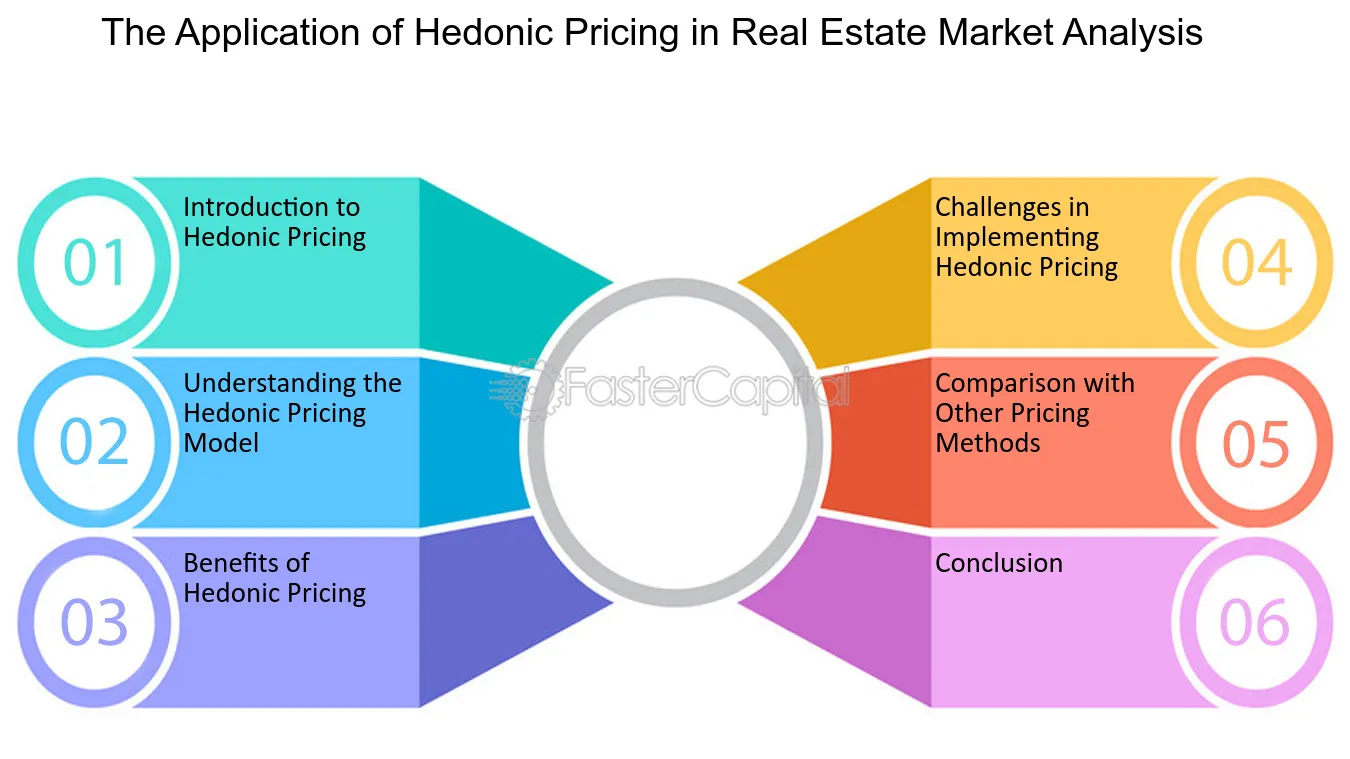Challenges in Real Estate Market Analysis
Real estate market analysis is a crucial part of any investment strategy, whether you are a buyer, seller, developer, or investor. It provides a comprehensive understanding of current market conditions and helps predict future trends. However, despite its importance, real estate market analysis is not without its challenges. Understanding these challenges is key to navigating the complexities of the market and making informed decisions.
In this article, we will explore the various hurdles that professionals face when conducting real estate market analysis, provide insight into overcoming them, and discuss advanced techniques and tools to help you stay ahead in a dynamic market.

Understanding Real Estate Market Analysis
Before delving into the challenges, let’s briefly define what real estate market analysis entails. It refers to the process of evaluating the performance of a real estate market by assessing factors such as pricing trends, market demand, economic indicators, and local property conditions. This process involves collecting, analyzing, and interpreting data to inform decisions about buying, selling, and investing in real estate.
Real estate professionals often use a combination of qualitative and quantitative data to forecast trends, understand market cycles, and determine the fair value of properties. The analysis takes into account historical trends, current market conditions, and projections for future performance.
Challenges in Real Estate Market Analysis
1. Market Volatility and Unpredictability
One of the most significant challenges in real estate market analysis is dealing with market volatility. Property values can fluctuate based on a wide range of factors, including economic cycles, interest rates, geopolitical events, and consumer sentiment. These fluctuations make it difficult to predict market trends with certainty.
For example, the COVID-19 pandemic caused a sudden and dramatic shift in the real estate market. Property values in certain areas dropped, while in others, the demand skyrocketed due to shifts in work-from-home policies and migration trends.
How to Overcome Volatility:
- Diversification: By diversifying your real estate portfolio across different property types and locations, you can minimize the impact of market volatility.
- Hedonic Pricing: This method accounts for the features and characteristics of properties that contribute to their value. It helps to separate market fluctuations from long-term value trends.
- Data-Driven Decisions: Utilize predictive analytics and AI to spot patterns in market behavior and anticipate future trends.

2. Lack of Accurate and Up-to-Date Data
Real estate market analysis heavily relies on accurate and timely data. Inaccurate, outdated, or incomplete data can significantly distort your analysis and lead to poor investment decisions. Data sources may include property sales prices, rental rates, economic indicators, or even social factors, but they are often fragmented across multiple platforms or outdated.
How to Overcome the Data Challenge:
- Leverage Advanced Tools: Use real estate data platforms like Zillow or Reonomy that offer access to comprehensive and up-to-date datasets.
- Automation and AI: Use AI-powered tools to continuously gather and analyze data, ensuring you’re always working with the most current market information.
- Cross-Validation: Cross-reference data from multiple sources to ensure its accuracy.
3. Economic Factors and Interest Rates
The broader economic environment plays a pivotal role in real estate market analysis. Changes in interest rates, inflation, and unemployment can dramatically affect property prices and demand. For example, when interest rates rise, borrowing costs increase, making it more expensive to finance property purchases. This can dampen demand, leading to price corrections.
How to Overcome Economic Uncertainty:
- Interest Rate Monitoring: Keep track of changes in interest rates and adjust your property investment strategies accordingly.
- Scenario Analysis: Use tools like stress testing to simulate how different economic scenarios could impact the market. This can help you plan for potential downturns.
- Focus on Local Markets: While national economic factors influence the broader market, local economic conditions often have a more direct impact on property values.
4. Geopolitical Factors and Policy Changes
Geopolitical events, such as trade wars, natural disasters, or government policy changes, can have a sudden and dramatic impact on the real estate market. For example, changes in zoning laws, tax policies, or rent control measures can directly affect property values and rental yields.
How to Overcome Geopolitical Challenges:
- Stay Informed: Regularly monitor geopolitical developments and government policies that may impact real estate markets.
- Flexibility: Be prepared to adjust your real estate strategies quickly in response to policy changes. The ability to pivot will help you mitigate risks.
- Legal Expertise: Consult with real estate attorneys to understand local and national regulations, which can influence property values and development opportunities.
5. Understanding Hedonic Pricing and its Application
One of the challenges in real estate market analysis is understanding how different property features influence value. Hedonic pricing is a method used to determine the value of a property based on its attributes, such as location, size, age, amenities, and condition. This model can be complex, as it requires precise knowledge of how each factor impacts property value.
How to Use Hedonic Pricing:
- Property Features Analysis: Evaluate each property feature (e.g., proximity to schools, transportation, and commercial centers) to understand its value contribution.
- Modeling: Use regression models or AI tools to estimate the impact of specific property features on market price.
- Adjust for Market Conditions: While hedonic pricing is valuable, it must be adjusted to account for market volatility and shifts in demand.

6. Difficulty in Forecasting Long-Term Trends
Real estate investment is often a long-term commitment, and accurately forecasting future trends is notoriously difficult. While you can analyze historical data and use models to predict future performance, there are always unforeseen variables that may affect your projections.
How to Improve Long-Term Forecasting:
- Diversify Investments: Spread your investments across various property types, locations, and market conditions to protect against future uncertainties.
- Use Predictive Analytics: Leverage AI tools and machine learning models that can help improve long-term forecasting by identifying subtle trends and patterns.
- Consult Experts: Work with market experts who have a deep understanding of long-term market cycles and trends.
7. The Impact of Local Market Conditions
Real estate is inherently local—what works in one market might not work in another. Differences in local demand, infrastructure, employment rates, and supply chain issues can significantly affect property values. Conducting a market analysis without taking these local conditions into account may lead to suboptimal decisions.
How to Overcome Local Market Challenges:
- Local Market Research: Conduct thorough research on local demographics, economic conditions, and future development plans.
- Use Localized Data: Obtain property data from local sources or real estate agents who have a deep understanding of the area.
- Network with Local Professionals: Connect with local experts, including brokers, developers, and city planners, who can provide valuable insights.
8. High Transaction Costs and Fees
Real estate transactions come with significant transaction costs that can eat into profits. These include closing costs, agent fees, property taxes, and legal expenses. These costs can add up quickly, and failure to account for them during the analysis can lead to inaccurate profitability projections.
How to Minimize Transaction Costs:
- Negotiate Fees: Work with agents and service providers to negotiate lower fees.
- Calculate All Costs Upfront: Factor in all potential costs, including long-term maintenance and property management fees.
- Invest in Software: Use software like Knockbase to analyze total costs and ensure that your property is profitable after all expenses.
Conclusion
Real estate market analysis is a complex and multifaceted process. Despite the various challenges—such as market volatility, economic factors, and data accuracy—investors can overcome these obstacles with the right tools, strategies, and insights. By using advanced techniques like hedonic pricing, staying informed on local market conditions, and diversifying investments, you can enhance your analysis and improve decision-making.
With the right approach, you can not only navigate these challenges but also leverage them to make informed, strategic investments that yield long-term success. Whether you’re a seasoned investor or just starting, understanding these challenges and how to overcome them is crucial to thriving in the ever-evolving real estate market.
FAQs
Q1: How do I account for interest rate changes in my real estate market analysis?
A1: Interest rate changes directly impact the affordability of properties and can influence buyer demand. Stay updated with rate forecasts and incorporate scenario modeling into your analysis to understand how changes will affect your investments.
Q2: What tools can I use for real estate market analysis?
A2: Tools like
Zillow, Reonomy, and Knockbase offer valuable insights into market trends, property data, and investment opportunities.
Q3: How can I predict long-term trends in real estate markets?
A3: Use predictive analytics and machine learning models to analyze past market behavior and identify emerging trends. Stay informed about economic indicators and local development plans to refine your forecasts.
Q4: What is hedonic pricing and how can it help with market analysis?
A4: Hedonic pricing is a method of valuing properties based on their individual characteristics, such as size, location, and amenities. It helps you understand how various property features influence market price, allowing for a more accurate valuation.

